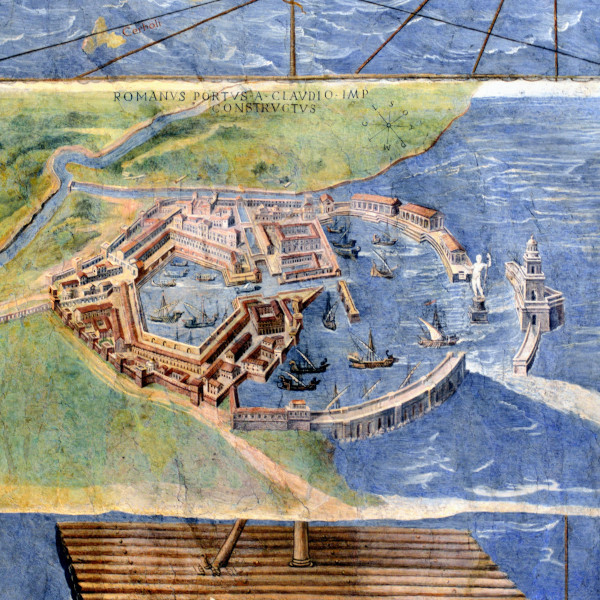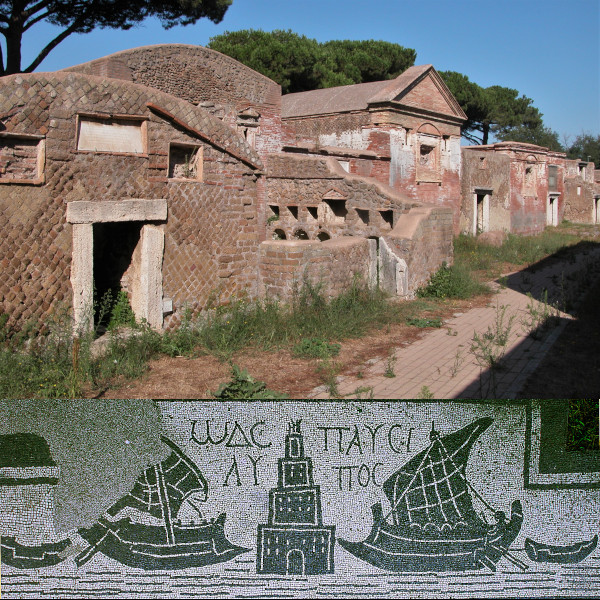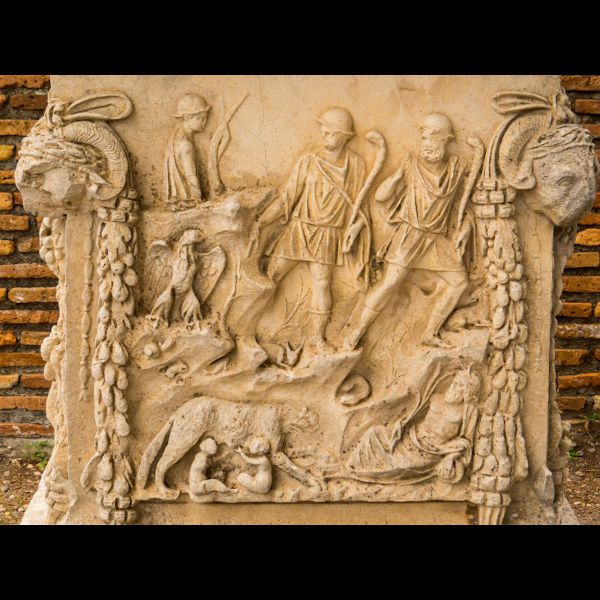DNA spotlight
Roman Port Ostia

Ostia was a town located on the mouth of the Tiber river approximately 30 km from Rome - in fact the name derives from the latin word Ostium meanign mouth. Originally founded in 620 BC, the city became the key naval base for Rome complete with a fortress. By 267 BC it became the seat of the quaestor Ostiensis who was responsible for watching over the Roman fleet. The city expanded and changed into a commerical harbor. Grain would arrive here from Siciliy and Sardinia as well as Tunisia. Wine from France, olive oil from Spain and marble from Greece and Turkey would arrive here before being towed by boat or carried by Oxen to Rome.
The city reached its peak in the 2nd and 3rd centuries AD. By 150 AD as Rome controlled all the Mediterranean, the population of Ostia exceeded 60,000. The construction of the famous hexagaonal Trajan harbor caused a rebirth in the town. Today Ostia Antica is one of the best preserved Roman cities in the world - on par with Pompeii. The site is full of the remains of docks, warehouses, apartment flats, mansions, shopping arcades and baths. Shown here is a view of the region near the necropolis where burial cells are clearly visible.

This image shows the Necropolis of Porto on Isola Sacra where the remains from this spotlight were found. This is located on a manmade island built during the reign of Emperor Trajan. Much of the excavated necropolis flanked the Via Severiana which connected Ostia to Terracina. The majority of the tombs were middle class - probably traders. There were a few poorer graves in urns as well as a few monumental tombs. Nearby is a floor mosaic depicting two ships, a lighthouse and the Greek inscription Ode Pausilypos (meaning this is the place where worry ends).

Most of the tombs found consisted of a cell with one or two floors, usually square, which were covered with barrel vaults or with a falt terrace. Brick facades would be decorated with triangular gables and travertine elements. Inscriptions were often in Latin or Greek and would show the name of the owner, the dimensions of the tomb, testaments and rules of use of the sepulcher. As Rome eventually fell to Barbarian conquest, the people fled, the nearby river changed course and the harbor filled with sediment. The entire place became a malaria infested swamp. Fortunately the mud preserved the city and ongoing excavations and preservation is thriving in Ostia.
Sample: Imperial Rome Isola Sacra Ostia Antica Port
- Sample ID: R11109
- Year: 200 AD
- Sex: Male
- Location: 41.7621,12.2491
Sample: Imperial Rome Isola Sacra Ostia Antica Port
- Sample ID: R11111
- Year: 200 AD
- Sex: Male
- Location: 41.7621,12.2491
Sample: Imperial Rome Isola Sacra Ostia Antica Port
- Sample ID: R11112
- Year: 200 AD
- Sex: Male
- Location: 41.7621,12.2491
Sample: Imperial Rome Isola Sacra Ostia Antica Port
- Sample ID: R11113
- Year: 200 AD
- Sex: Male
- Location: 41.7621,12.2491
Sample: Imperial Rome Isola Sacra Ostia Antica Port
- Sample ID: R11115
- Year: 200 AD
- Sex: Male
- Location: 41.7621,12.2491
Sample: Imperial Rome Isola Sacra Ostia Antica Port
- Sample ID: R11116
- Year: 200 AD
- Sex: Male
- Location: 41.7621,12.2491
Sample: Imperial Rome Isola Sacra Ostia Antica Port
- Sample ID: R11117
- Year: 200 AD
- Sex: Male
- Location: 41.7621,12.2491
Sample: Imperial Rome Monumental Tomb Isola Sacra Ostia Port
- Sample ID: R11118
- Year: 200 AD
- Sex: Male
- Location: 41.7621,12.2491
Sample: Imperial Rome Isola Sacra Ostia Antica Port
- Sample ID: R11119
- Year: 200 AD
- Sex: Male
- Location: 41.7621,12.2491
Sample: Imperial Rome Isola Sacra Ostia Antica Port
- Sample ID: R11120
- Year: 200 AD
- Sex: Male
- Location: 41.7621,12.2491
